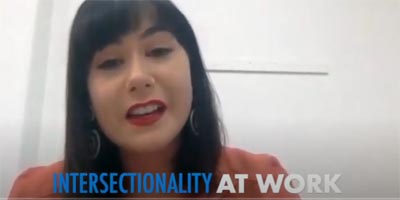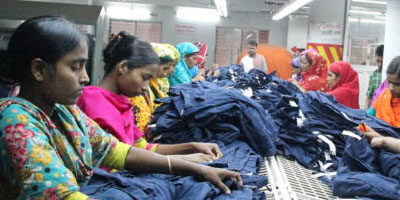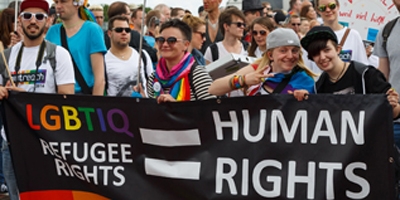Using an intersectional approach to discrimination demands that we think differently about identity, equality and power in ways that make spaces more open and welcoming so that everyone can enjoy them to their fullest extent.
Sheena Wadhawan, dubbed “the doula for social movements and organizations,” talked with author Sydnee Novack about how intersectionality looks when applied to our workplaces, its importance in these spaces, and how to be an appropriate ally at work.
“You can only create a space that is inclusive for me if you understand the intersections of my identity.” – Sheena Wadhawan
Sheena Wadhawan is part of a growing movement calling for an increasingly intersectional approach in our workplaces and daily lives.
An intersectional approach means thinking about identity, equality and power. Rather than those based upon defined categories or isolated issue areas, it focuses on points of intersection, complexity, dynamic processes, and the structures that define our access to rights and opportunities. In a more analytical sense, this approach demands that we see the eradication of discrimination and the celebration of diversity as fundamental to development and the enjoyment of human rights for everyone at the table.
Kimberlé Crenshaw, law professor and social theorist, first coined the term “intersectionality” in her 1989 paper “Demarginalizing The Intersection Of Race And Sex: A Black Feminist Critique Of Antidiscrimination Doctrine, Feminist Theory And Antiracist Politics.” Her work was based on efforts that started to emerge two decades earlier, when black feminists began to speak out their experiences with the white, middle-class nature of the mainstream feminist movement.
Wadhawan had a similar experience in her youth. Now in her mid-30s, she recalls that the feminism she encountered belonged to elite, university-educated, white women which provided little to no space for her. Upon the discovery of intersectional feminist circles later in life, she felt like she now had the space and the voice to participate in a movement that mattered to her.
As a consultant coming from a background of social justice advocacy, she finds that the intersections of one’s identity are central concerns for workspaces because they are at the core of people experiences.
For example, a man of colour might have an entirely different experience from a woman of colour at an office in which there is sexism.
Or, consider the circumstances for queer and trans people. Workplaces are still largely cisgendered.* Many people don’t realize the privilege of being cisgendered in our appearances, from how we look to what we wear. Taking an intersectional approach, one needs to consider in great detail what it’s like to be these individuals.
If a co-worker is of the trans community, one could consider the burdens and stresses they may have encountered before they walked in the door. All those seemingly miniscule and nuanced habits we have may have felt to them like the weight of the world, from considering how they are going to present that day, to what they are going to wear, to what was their experience at the coffee shop this morning was like. Did anyone call them names on their way in? What bathroom could they use?
Wadhawan believes that we need to understand what folks go through during their regular day before they even walk into the work space, in order to better accommodate them. In doing so, we need to constantly ensure that we are holding that space for them and are consciously aware of the ways in which the work space might unconsciously or implicitly reinforce biases and privileged structures that favour the majority.
So, just how do we make our workplaces intersectional? Wadhawan suggests three main steps in the right direction:
1. Planning & Goal Setting. Ask: “Do we have goals and a plan?” A practical way to analyse an organization’s actual commitment to diversity and inclusion efforts is to look at its policies and implementation. If an organization hasn’t planned for it, and it’s not in their goals – then they’re not on their way towards an inclusive workspace.
2. Resources. Ask: “Is it resourced?” Following planning, another indicator of inclusive spaces is appropriate resourcing. In a company’s budget, how are funds allocated, for example between the technicians, the janitorial services, and the diversity and inclusion team? This exercise helps you to take a step back and ask if having an inclusive space is given as much of a priority as bathroom cleanliness and tech support. In our contemporary workplaces, volunteer committees for diversity and inclusion are common in well-resourced companies, but how clean would your bathrooms be if volunteers maintained them? With the amount of consultants, trainers, and materials available to tackle your issues with intersectionality, there’s no excuse not to resource it, and bring it into your business practices.
3. Process. Ask: “Is it part of your process?” Every decision point, from where we throw our happy hours to how bathrooms are allocated, may reinforce a culture of whiteness and heteronormativity. Implementing decision-making processes with intersectionality in mind would contribute to a natural space where people feel comfortable to speak up and be themselves.
One thing to keep in mind is that an intersectional, inclusive workplace won’t happen overnight, and those that might be experiencing various systems of oppression in the meantime may require some support.
Wadhawan suggest that white folks, allies, cisgendered folks need to do their own inner-work. Specifically, she means taking a critical look at the ways in which we all participate in bias, in systems of oppression, and the ways in which we’ve internalized majority structures.
However, it is helpful to be able to have this inner critique without the blaming and shame we often attribute to such notions; instead we must look at it with healing energy, and a commitment towards transformation in which we can all benefit.
Wadhawan stresses that until we transform ourselves and truly look within, we cannot make that systemic change that is called for in our workspaces and beyond.
*Cisgender – a term for people whose gender identity matches the sex that they were assigned at birth.
Sheena Wadhawan is a “consultant, facilitator, and coach for organizations seeking to evolve and transform.” You can find out more about her work here: https://www.sheenawadhawan.com
Sydnee Novack was an intern in the advocacy program at Social Justice Connection and a graduate student at Sciences Po Paris. You can find out more about her work here: https://www.linkedin.com/in/sydnee-novack/







